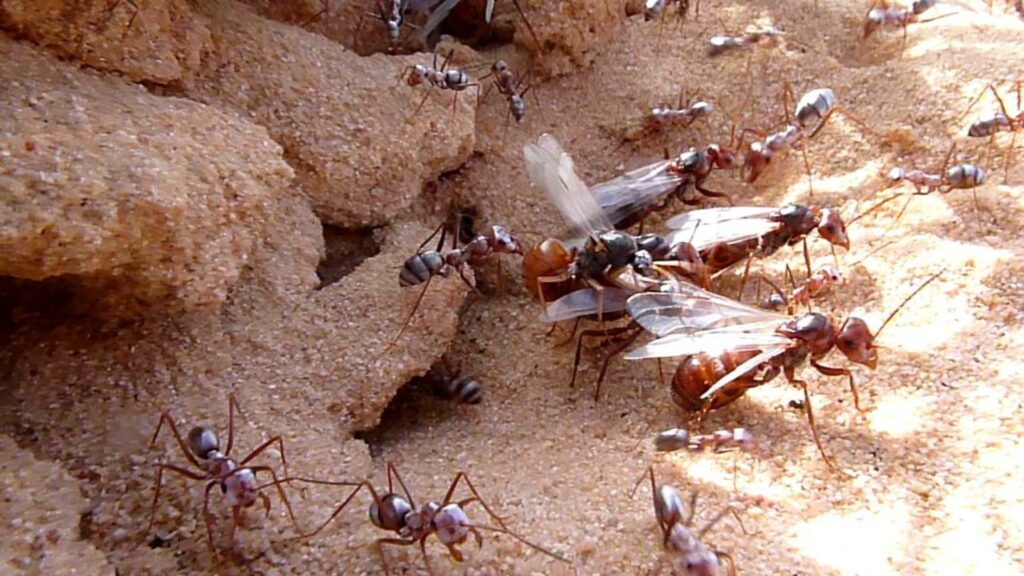Ants’ relative strength-to-size ratio is among the highest in the world, making them some of the most resilient creatures out there. For instance, the neck joint of the common American field ant can withstand pressures up to 5,000 times the insect’s weight.
This phenomenal strength is owed to ant’s mechanical configuration — but it wasn’t always like this.
Millions of years ago, the ancestors of ants had wings. A new study highlights how this transition to a wingless life enabled worker ants to become some of the most successful insects in the animal kingdom.
Losing flight to make way for super muscles

Most science about ants tends to focus on their social behavior, which is also remarkable. But unlike this majority of studies, researchers at the Okinawa Institute of Science and Technology Graduate University (OIST) in Japan and the Sorbonne University in Paris focused on ant body mechanics. They wanted to see how the loss of flight in worker ants impacted the evolution of their strength.
Only reproductive ants have wings, which are able to fly only during the breeding season. But the foraging worker ants of any species that you see trailing on the sidewalk or in your kitchen will never have wings.
The project was started by Dr. Christian Peeters, an ant biologist at the French National Scientific Research Agency (CNRS). Along along with colleagues, he used advanced X-ray imaging technology to scan the internal and external anatomy of individual worker ants. Particularly, the focus was on the thorax, which perfectly organizes the worker ants muscles for maximum strength.
Sadly, Peeters passed away this year before he could see this study published.
“My colleague, Christian Peeters, had been thinking about the importance of the winglessness of ant workers as a key evolutionary change, and since my lab had been studying ant anatomy with x-ray micro-CT, he proposed we investigate how the loss of flight changed the thorax,” Evan Economo, who leads OIST’s Biodiversity and Biocomplexity Unit, told ZME Science.
“Organisms that fly have massive constraints on their anatomy and physiology. The key finding from this study is that losing flight freed up the ant thorax to be redesigned for ground labor, and we identified five key changes that we observe in these wingless workers.”
Flying is an extraordinary ability — but it comes at a very high cost. In flying insects, the wings often occupy more than 50% of the thorax, which squeezes other muscles involved in supporting other body parts, such as the head, legs, and abdomen.
After worker ants lost their wings, all that extra space allowed the remaining muscles to expand and reorganize. For instance, the authors of the new study found that three muscle groups expanded in volume in the thorax.
The neck muscles were also modified, as well as the internal attachment of the muscles.
“The thorax of winged insects is dominated by muscles that power flight. Without these, space is freed up for the expansion and reorientation of muscles that move support the head, bear and transfer load to the legs, and move the abdomen,” Economo said.
This reconfiguration wasn’t necessarily straightforward, though. When looking at wingless wasps, the researchers found that they adapted to the loss of flight in a completely different way. Unlike the perfectly ordered ant colonies, wingless wasps are solitary creatures that forage for food as they find it. So, the wasps were far less pressured by evolution to evolve strong muscles to carry food back to their queen and young nestmates.
Next, the researchers would like to study other muscle groups as closely as the thorax, such as the mandible and legs.
“Everyone knows ants are strong and efficient workers. We hope this study helps people understand a little bit about why. We will continue our work to uncover the evolutionary story of how ants evolved and how they became such a big part of our world. We have studies ongoing about their head anatomy, brains, mandibles, legs, etc,” Economo told ZME Science.
The findings appeared in the journal Frontiers in Zoology.


